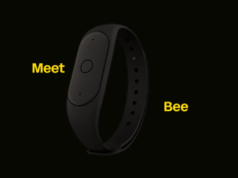You might not have thought it was possible, but Microsoft appears to have outdone itself this time — but not in a good way. With Windows 10, the company has somehow managed to design an operating system that seems to be even less popular than the wildly unpopular Windows 8 it was designed to replace, if the number of complaints rolling in are anything to go by.
Thousands of users in the U.K. alone have written in to complain about Redmond’s latest OS, according to Which?, a UK-based consumer advocacy group. “We’ve received well over 1,000 complaints about Windows 10, as well as plenty of comments on Which? Conversation, with PC users telling us that this software update has brought them nothing but problems,” Andrew Laughlin, senior researcher for Which? Technologies wrote on the group’s site. “We’re calling on Microsoft to do better.”
Upgraded, Like It or Not
The complaints cover a wide variety of problems with the new OS, including peripheral devices no longer working with the new system, email accounts failing to sync, files and data being deleted, and forced uninstalling of applications — even apps produced by Microsoft, such as Office 2010. In some cases, users have reported problems so severe that they have had to pay technicians to fix them.
What appears to make the problem even more frustrating are the aggressive tactics the company has adopted in pushing users to upgrade to the new system, with intrusive pop-ups that constantly remind them to update their machines. Some users have reported that even after declining the update several times Windows 10 has automatically installed itself anyway. The problem of unwanted upgrades has been so pervasive that some users have even compared the upgrader to malware.
While Microsoft has offered free customer service to anyone experiencing problems with the new OS, many users said they have had trouble contacting the company.
There’s No Going Back
Given the near ubiquity of Windows machines in the business world, the problem may be particularly acute for enterprise clients.
But it wasn’t supposed to be like this. When it was first released a year ago, Windows 10 was seen as the answer to one of Microsoft’s biggest problems: the unpopularity of Windows 8. That operating system, which significantly changed the user interface, proved so unpopular with clients that many reported “downgrading” back to the popular Windows 7.
Windows 10 was to be the operating system’s return to form, with the restoration of the familiar desktop environment and features such as a new and improved browser to replace the aging Internet Explorer. The company even made the unprecedented step of offering Windows 10 at no cost. While Apple and other companies typically make their operating system upgrades available free of charge, the move was a first for Microsoft, which has traditionally sought to make a profit off users’ needs for a Windows environment.
However, there may not be a whole lot users who are not satisfied with the new system can do. If users don’t have either a recovery partition or separate copy of their previous OS, they’ll just have to make their peace with the new Windows 10 world. Unless, of course, they opt to make the jump to the Linux operating system.
Lobo:
Posted: 2016-09-23 @ 10:04am PT
Is this a story? 1000 complaints for an OS nearly 400 million installations?






